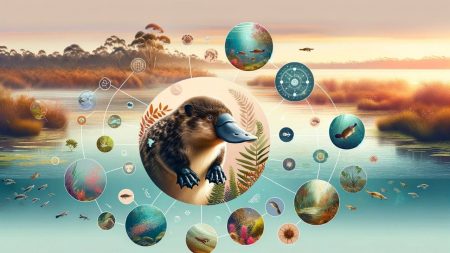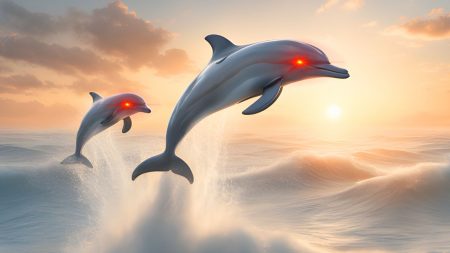Point Nemo, also known as the Oceanic Pole of Inaccessibility, is the most remote location on Earth. It lies in the South Pacific Ocean, equidistant from the nearest landmasses. It is a place of mystery, isolation, and fascinating scientific discoveries. In this article, we will uncover 15 mind-blowing facts about Point Nemo, revealing its uniqueness and significance in our understanding of the Earth.
Table of Contents
- 1. Point Nemo: Most Remote Place on Earth and Oceanic Point of Inaccessibility
- 2. Etymology of the Name “Point Nemo” – Oceanic Pole of Inaccessibility
- 3. Point Nemo: A Desert in the Ocean
- 4. Point Nemo has no Human Inhabitants
- 5. Point Nemo as a Spacecraft Cemetery
- 6. A Silent Soundscape
- 7. Unique Microbial Life
- 8. A Potential Proxy for Extraterrestrial Life
- 9. A Weather Anomaly – The “Southern Vortex”
- 10. Limited Exploration and Ongoing Mysteries
- 11. Point Nemo Was Discovered Just Over Three Decades Ago
- 12. Point Nemo Is The Home Of Cthulhu
- 13. Point Nemo Was Once Thought To Contain Life
- 14. Satellite Monitoring and Oceanographic Studies
- 15. The Role of Point Nemo in Climate Change Research
- 16. Conclusion
1. Point Nemo: Most Remote Place on Earth and Oceanic Point of Inaccessibility
Point Nemo is located at the coordinates 48°52.6′S 123°23.6′W. This remote point lies in the South Pacific Ocean, approximately 2,688 kilometers (1,670 miles) away from any land.
It is equidistant from three different landmasses: Ducie Island (part of the Pitcairn Islands) to the north, Motu Nui (an islet near Easter Island) to the northeast, and Maher Island (near the coast of Antarctica) to the south.
2. Etymology of the Name “Point Nemo” – Oceanic Pole of Inaccessibility
The name “Point Nemo” has literary roots. It is derived from Jules Verne’s famous novel, “20,000 Leagues Under the Sea,” where a mysterious and enigmatic character Captain Nemo explores the depths of the ocean.
“Nemo” is also Latin for “no one,” which is fitting for a place that is so remote and devoid of human presence. Point Nemo’s official name is the Oceanic Pole of Inaccessibility, which refers to its position as the farthest point from any land on Earth.
3. Point Nemo: A Desert in the Ocean
Despite being surrounded by water, Point Nemo is considered an oceanic desert. The coordinates of Point Nemo are situated within the South Pacific Gyre, a vast circulating current that inhibits the influx of nutrient-dense waters into the region.
The waters around it are nutrient-poor due to the lack of upwelling currents that would normally bring nutrient-rich waters to the surface.
This results in a low abundance of marine life compared to other parts of the ocean. As a consequence, the area has very low biological productivity, making it an inhospitable environment for many marine species.
4. Point Nemo has no Human Inhabitants
There are no human settlements near Point Nemo. Its extreme remoteness and harsh oceanic conditions make it an unsuitable location for human habitation.
In fact, the closest people to Point Nemo are usually astronauts aboard the International Space Station (ISS), which orbits the Earth at an altitude of approximately 408 kilometers (253 miles). The ISS is sometimes closer to Point Nemo than any other humans on the planet.
5. Point Nemo as a Spacecraft Cemetery
Point Nemo is also known as the “Spacecraft Cemetery” due to the large number of decommissioned satellites and other spacecraft that have been intentionally crashed into the ocean in this area.
The remoteness of Point Nemo makes it an ideal location for controlled re-entry of spacecraft, as the risk of debris harming humans or damaging property is extremely low.
Since the 1970s, more than 250 spacecraft have been laid to rest in the watery depths around Point Nemo, including the Russian space station Mir.
6. A Silent Soundscape
The underwater soundscape around Point Nemo is remarkably quiet. The lack of human activity, the sparse marine life, and the distance from shipping routes all contribute to an unusually silent environment.
This makes it an ideal location for studying the natural sounds of the ocean, unobstructed by human noise pollution.
Research on underwater acoustics in this region can provide important insights into the behavior of marine animals and help scientists understand how anthropogenic noise affects marine ecosystems.
In 1997, scientists were stunned to record one of the loudest underwater sounds ever heard near the oceanic pole of inaccessibility, a very remote place in the ocean.
This mysterious sound was picked up by underwater microphones that were over 3,000 miles away from each other.
The researchers at America’s National Oceanic and Atmospheric Administration (NOAA) couldn’t figure out what could possibly make such a loud noise underwater.
They decided to call this unknown sound “The Bloop.”
7. Unique Microbial Life
Although Point Nemo may be lacking in large marine animals, it is home to a unique community of microorganisms. These extremophiles, which are organisms that can survive in extreme environments, have adapted to the nutrient-poor conditions of the region.
In 2018, researchers discovered new species of bacteria and archaea living in the depths of Point Nemo. These microscopic life forms provide important insights into the resilience and adaptability of life on Earth.
Studying these microorganisms can help scientists understand how life can survive in harsh environments, potentially even beyond our own planet.
8. A Potential Proxy for Extraterrestrial Life
Due to the extremophile microorganisms found at Point Nemo, scientists consider the region a potential proxy for studying extraterrestrial life.
The extreme conditions in this remote area of the ocean mimic some of the environments that may be found on other planets and moons within our solar system.
By studying the microbial life at Point Nemo, researchers can gain a better understanding of the potential for life to exist in extraterrestrial environments, such as Mars or the icy moons Europa and Enceladus.
9. A Weather Anomaly – The “Southern Vortex”
The unique location of Point Nemo also results in an unusual weather phenomenon known as the “Southern Vortex.” This atmospheric vortex is caused by the convergence of three major ocean currents: the South Pacific, the Southern Ocean, and the Antarctic Circumpolar.
The resulting weather patterns create a persistent low-pressure system, characterized by strong winds and frequent storms. These extreme weather conditions add to the inhospitable nature of Point Nemo and contribute to its isolation.
10. Limited Exploration and Ongoing Mysteries
Due to its remoteness and challenging conditions, Point Nemo remains one of the least explored regions of Earth. Many aspects of its underwater environment, including its geology, oceanography, and biodiversity, are still shrouded in mystery.
This makes Point Nemo a tantalising frontier for future research and exploration, with the potential to uncover new discoveries and insights about our planet and beyond.
11. Point Nemo Was Discovered Just Over Three Decades Ago
Although the Earth’s oceans have been explored for centuries, the exact location of Point Nemo was only pinpointed in 1992 by Croatian-Canadian geographer Hrvoje Lukatela.
Using a geospatial computer program, Lukatela calculated the point in the ocean that was the farthest from any landmass.
His discovery of Point Nemo has since piqued the interest of scientists and the general public, leading to further exploration and research into this remote region of our planet.
12. Point Nemo Is The Home Of Cthulhu
While there is no scientific basis for the claim, fans of H.P. Lovecraft’s works of fiction may associate Point Nemo with the mythical underwater city of R’lyeh, home of the cosmic entity Cthulhu.
Lovecraft’s stories often focus on the mysteries of the deep ocean and the otherworldly beings that lurk beneath the waves. Although Point Nemo and R’lyeh are not directly linked in Lovecraft’s works, the remote and mysterious nature of Point Nemo has captured the imaginations of fans who draw connections between the two.
13. Point Nemo Was Once Thought To Contain Life
Before the discovery of extremophile microorganisms in the waters of Point Nemo, scientists believed that the nutrient-poor conditions and isolation of the region would make it virtually devoid of life.
However, the surprising discovery of bacteria and archaea adapted to the extreme environment of Point Nemo has challenged this assumption. While large marine animals are scarce, the presence of these extremophiles demonstrates that life can thrive in even the most inhospitable conditions.
14. Satellite Monitoring and Oceanographic Studies
Due to its remote location, Point Nemo has become an ideal location for satellite monitoring and oceanographic studies. The absence of human activity and the relative lack of marine life in the area allow for undisturbed data collection and analysis.
As a result, several research institutions and space agencies have established satellite observation stations in the vicinity of Point Nemo. These facilities contribute to our understanding of the Earth’s climate, weather patterns, and the overall health of our oceans.
15. The Role of Point Nemo in Climate Change Research
Point Nemo’s unique location and conditions also make it an important site for climate change research. The convergence of major ocean currents and the persistent low-pressure system create a natural laboratory for studying the effects of climate change on ocean circulation, weather patterns, and marine ecosystems.
As researchers continue to explore and monitor Point Nemo, they hope to gain a better understanding of how climate change impacts our planet’s oceans and the life that depends on them.
Conclusion
Point Nemo, the Oceanic Pole of Inaccessibility, is a place of isolation, mystery, and scientific intrigue. Its unique location, extreme conditions, and the enigmatic life forms that call it home have captured the imagination of researchers and the general public alike. As we continue to explore and study this remote part of our planet, we can only imagine what new discoveries and insights await us.
Read More:
- 100 Facts About Saturn: Fascinating Mysteries of the Ringed Planet
- Fascinating World of Finger Monkeys (Marmoset): Facts And Insights
- 32 Interesting Facts About AT&T
- The Strange Story of Albert Einstein’s Brain After Death & The Key Findings
- 140+ Random Creepy Facts That Will Shock You
- 100 Fun & Interesting Facts About Ice Cream That Will Shock You
- 18 Fascinating Facts About Viking Longships. #15 Will Shock You










